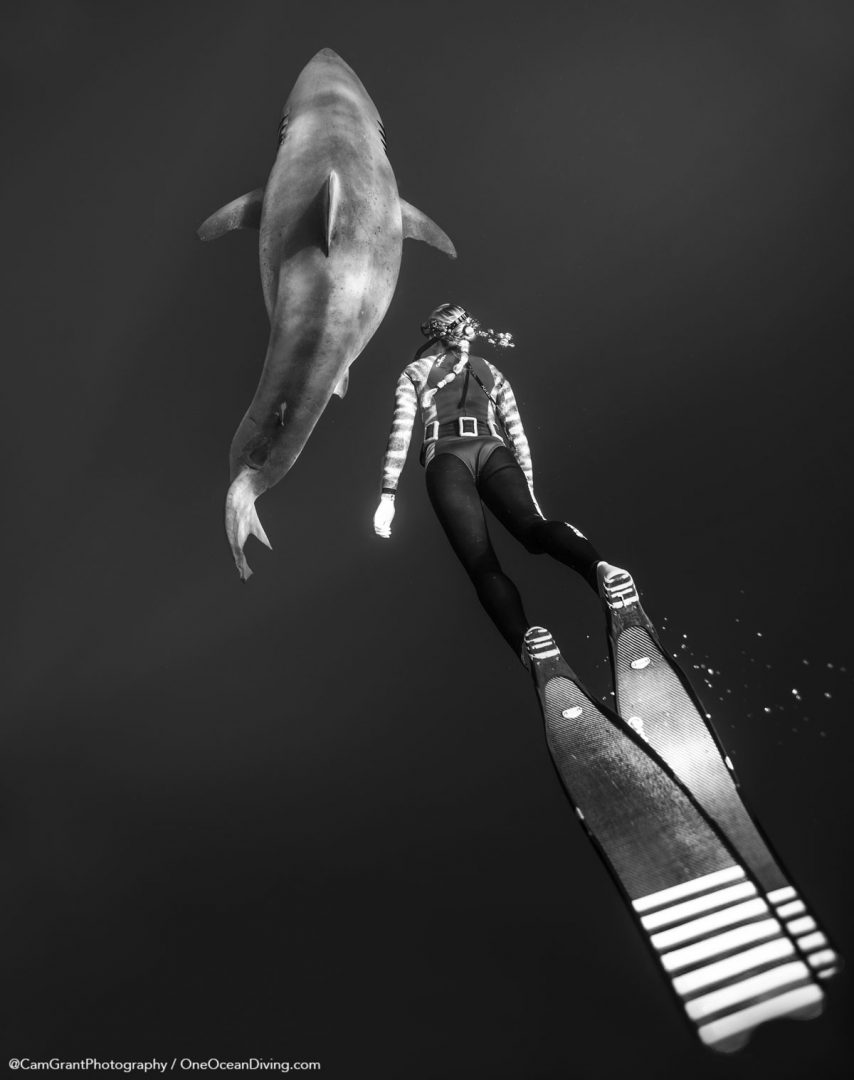Now That’s A Shark
Around the world, children and their parents are taught to swim well-clear from shark-infested waters, but it seems that to understand them more, we need to join them wherein they roam. Hawaiian-born marine biologist and conservationist, Ocean Ramsey, follows that mentality with her team, One Ocean Research, who make it their mission to study and learn shark behaviour, abundance and specific individuals.
Just off the Hawaiian island of Oahu, Ramsey and her team were filming tiger sharks feeding. What they weren’t expecting to see was one of the biggest great white sharks the world had ever seen. Ramsey described it as an extremely special encounter “because while I work with [great] white sharks all around the world, they are extremely rare in Hawaii. This individual may be one of the largest recorded and shows similar markings to ‘Deep Blue’, a shark I’ve studied in Isla Guadalupe, Mexico where I’ve done most of my work with white sharks.” The behemoth was approximately 20 feet long and 8 feet wide, or in other terms, half the length of a school bus, with the ability to probably pack just as many kids in
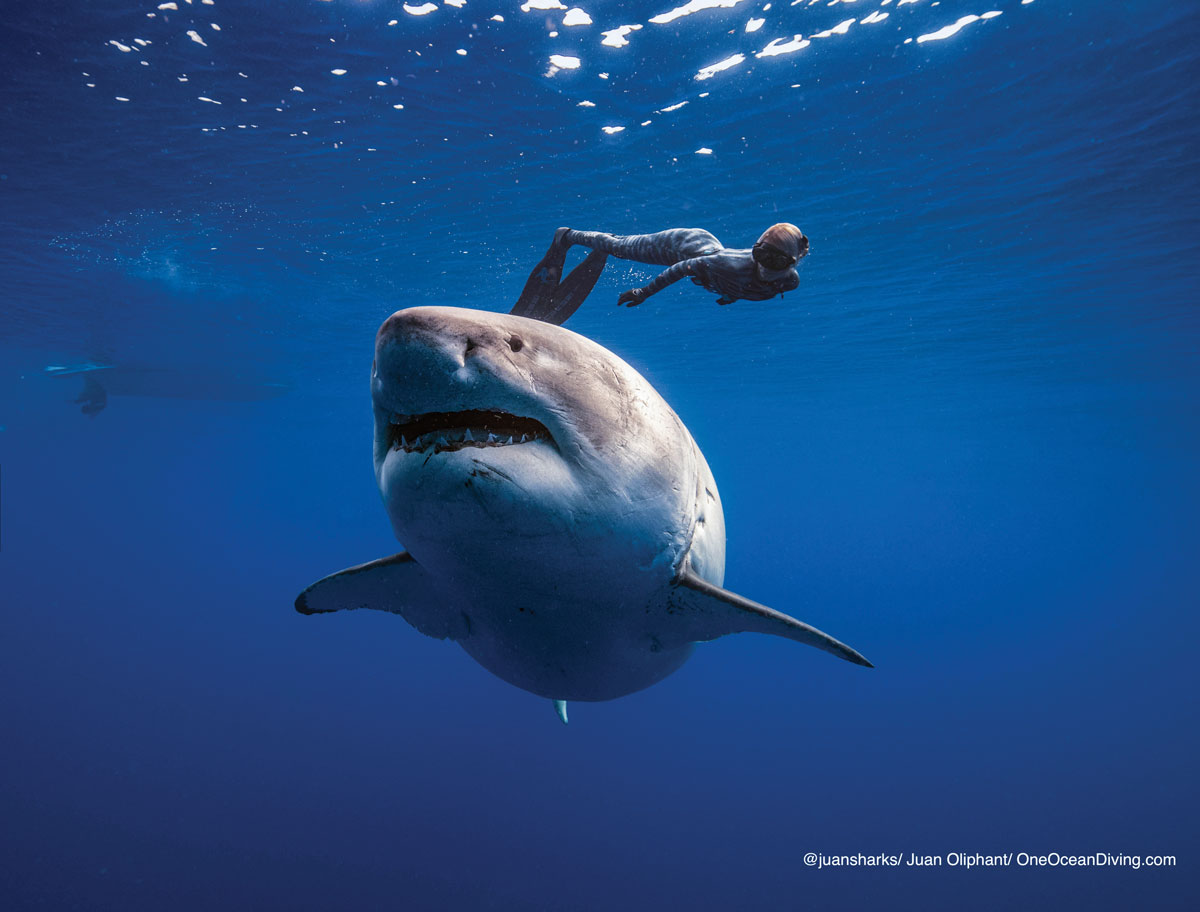
“This gentle giant swam up and brushed up against our boat repeatedly.” Ramsey said. “There is a theory that large females come here when they are possibly pregnant trailing whales. There was a dead sperm whale in the area and we did observe her from a distance swimming over to it and eating it on a regular basis throughout the day. Sharks role in the ecosystem is to pick off the dead, dying, weak, wounded, sick, and injured, thereby keeping lower trophic levels healthy and in balance.”
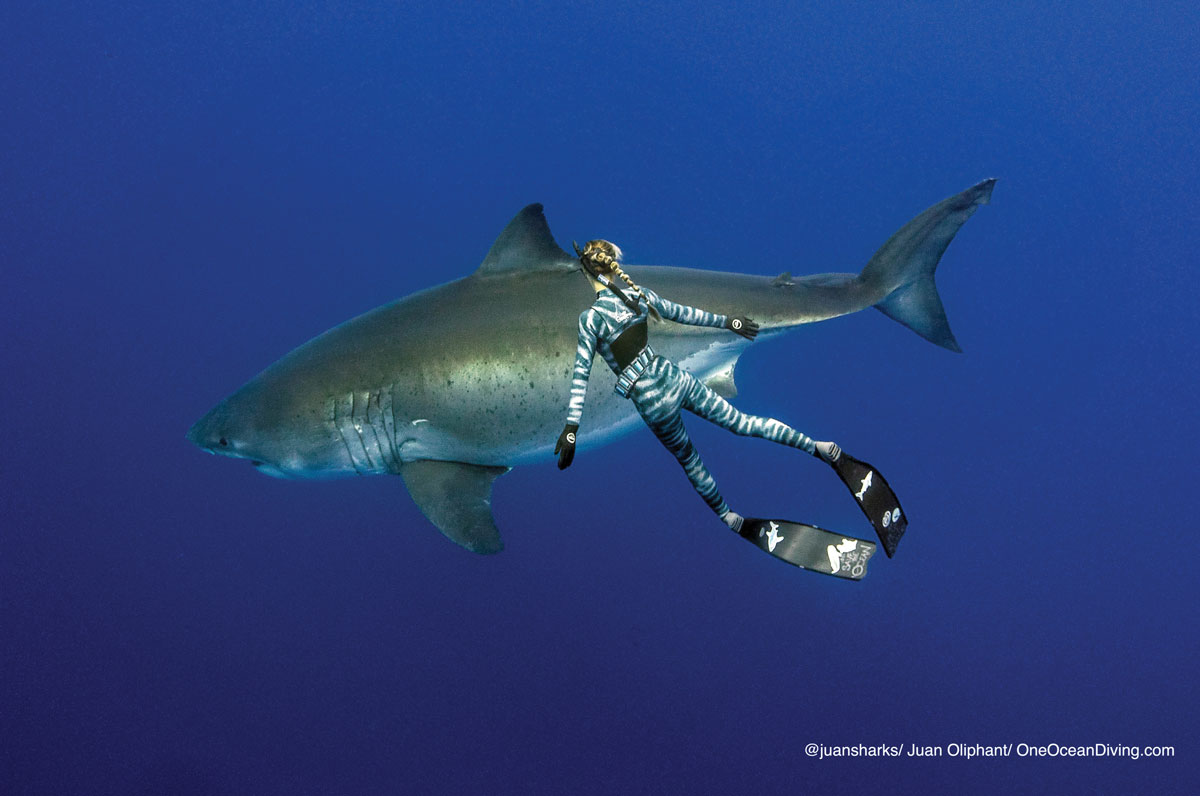
After typing ‘Shark Statistics’ into Google, it immediately returns to me, auto-corrected, as ‘Shark Attack Statistics’. This sort of water-dweller has been hit with negative connotations, the blood-thirsty hunters of the sea. I think it’s a bit of a rough label for creatures who are just trying to survive.
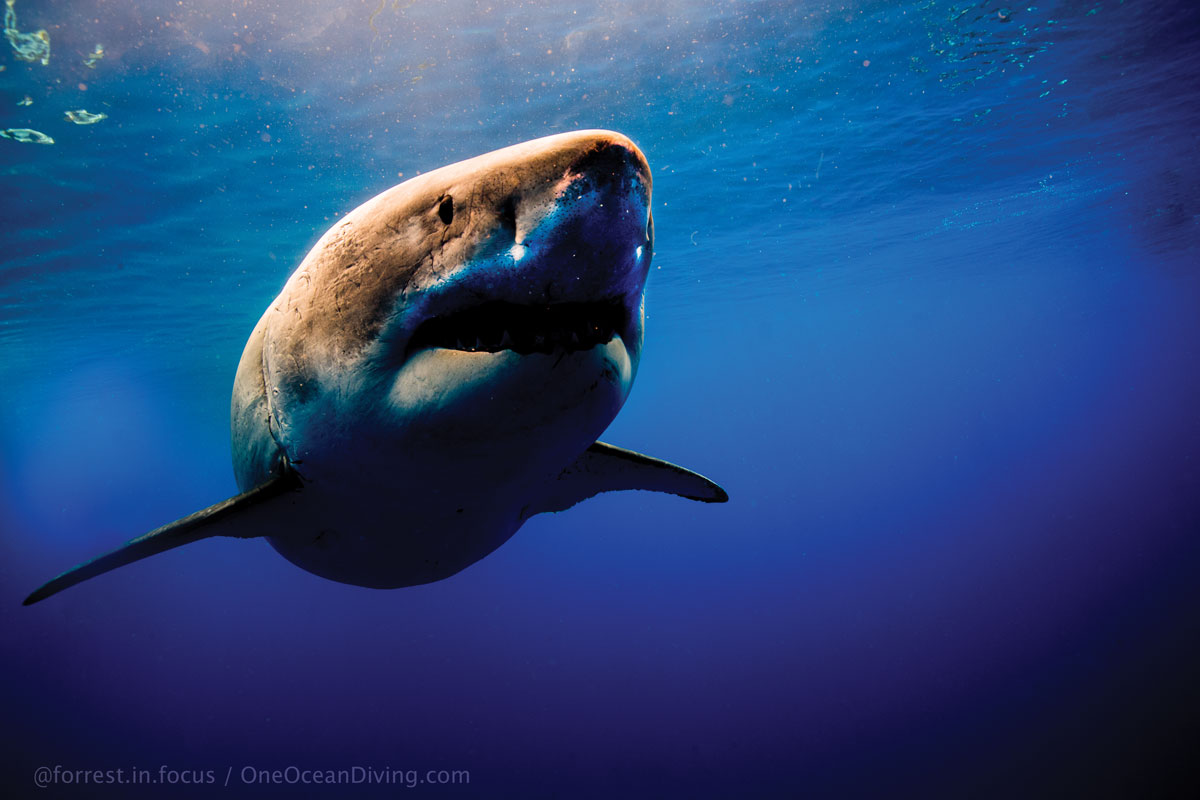
The ocean is such a vastly expansive place. It is filled with over a million species of wildlife, with 440 of those types being sharks. The shark population at hot breeding spots around the world, like Hawaii, for example, have unfortunately been declining over the years due to mass hunting and fishing.
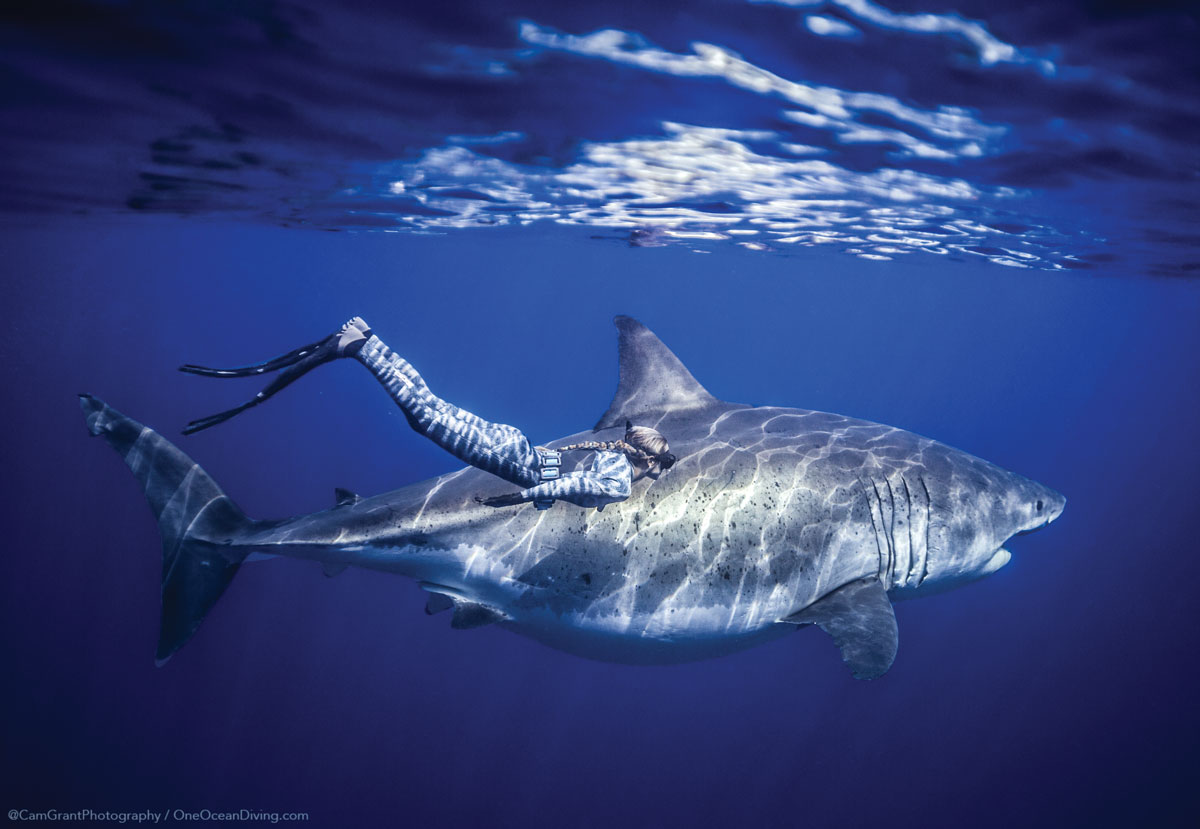
Over 100 million sharks are caught each year, accounting for between 6.4% and 7.9% of ALL sharks. Normally sharks are caught for their fins which are then removed. The rest of the shark is then released back into the ocean to spend its last few moments contemplating how nice it would be to be able to swim.
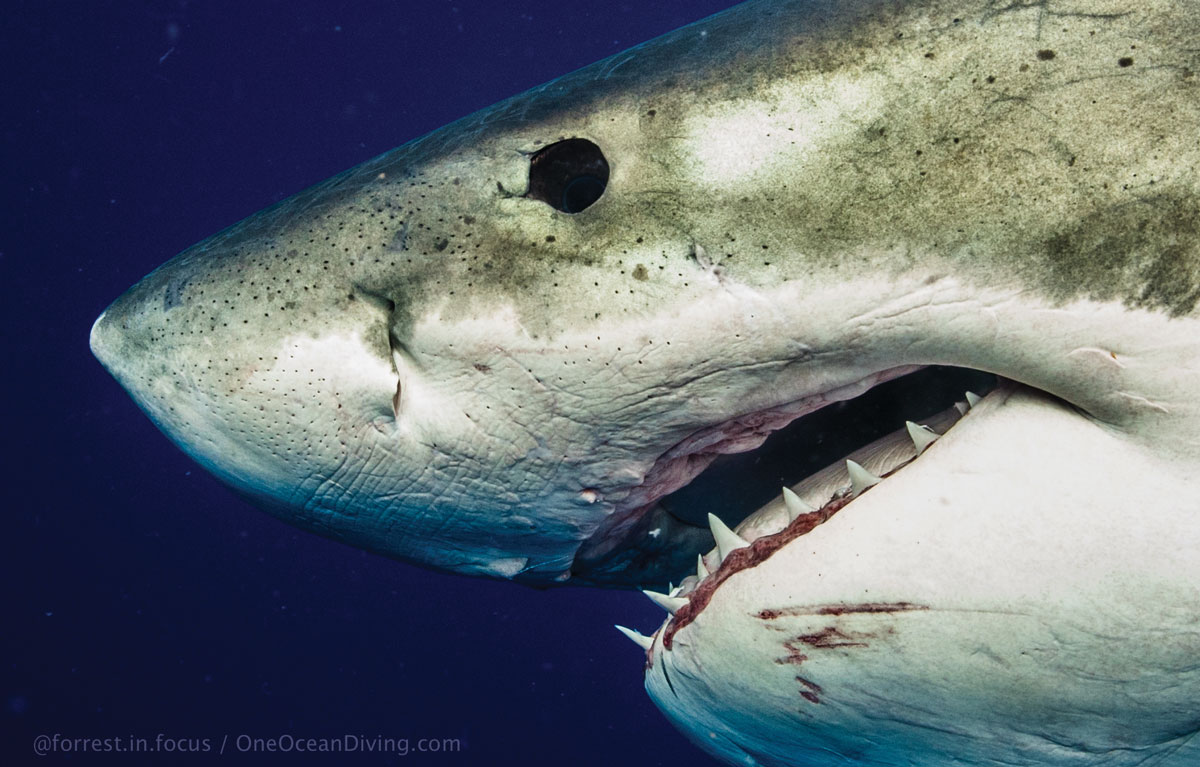
While we get to enjoy these pictures of “the biggest shark ever”, our children may one day be enjoying pictures of the “last shark ever”.
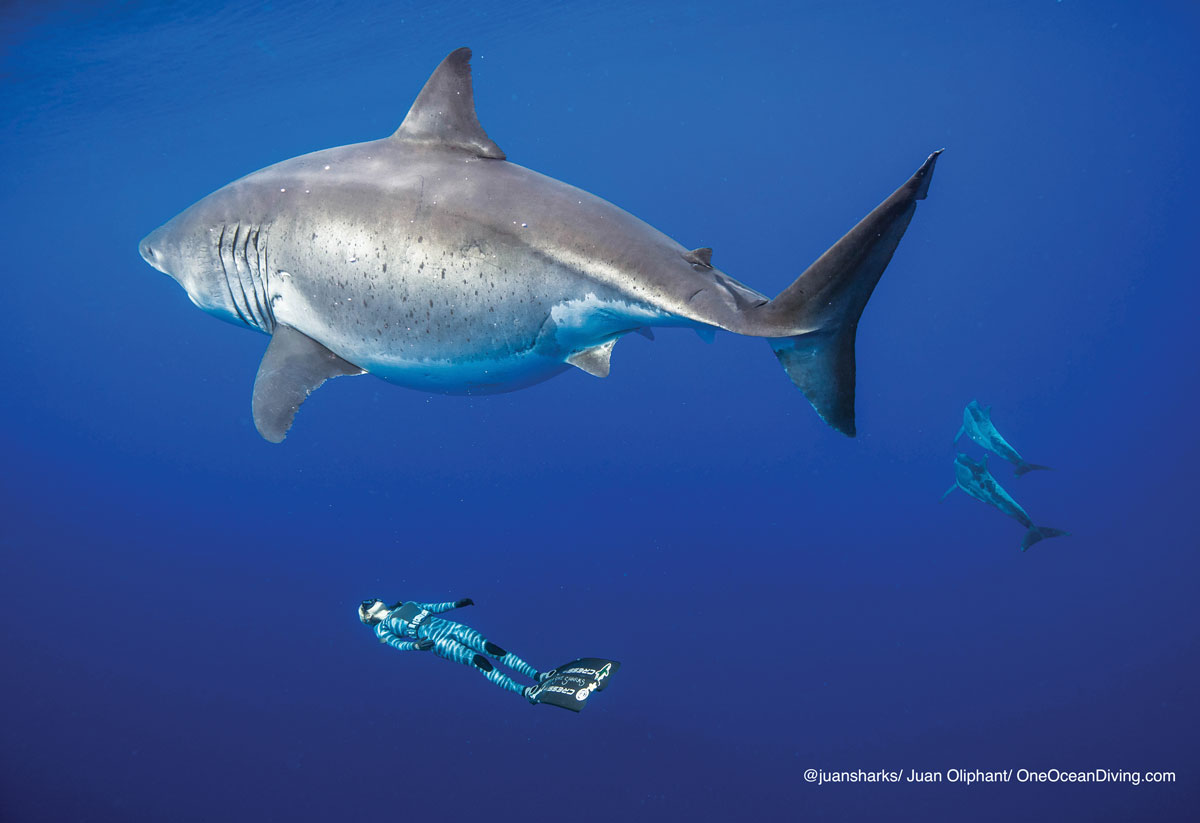
“We hope these images and videos will spark a movement for more laws to protect sharks here in Hawaii and around the world.” concluded Ramsey.
